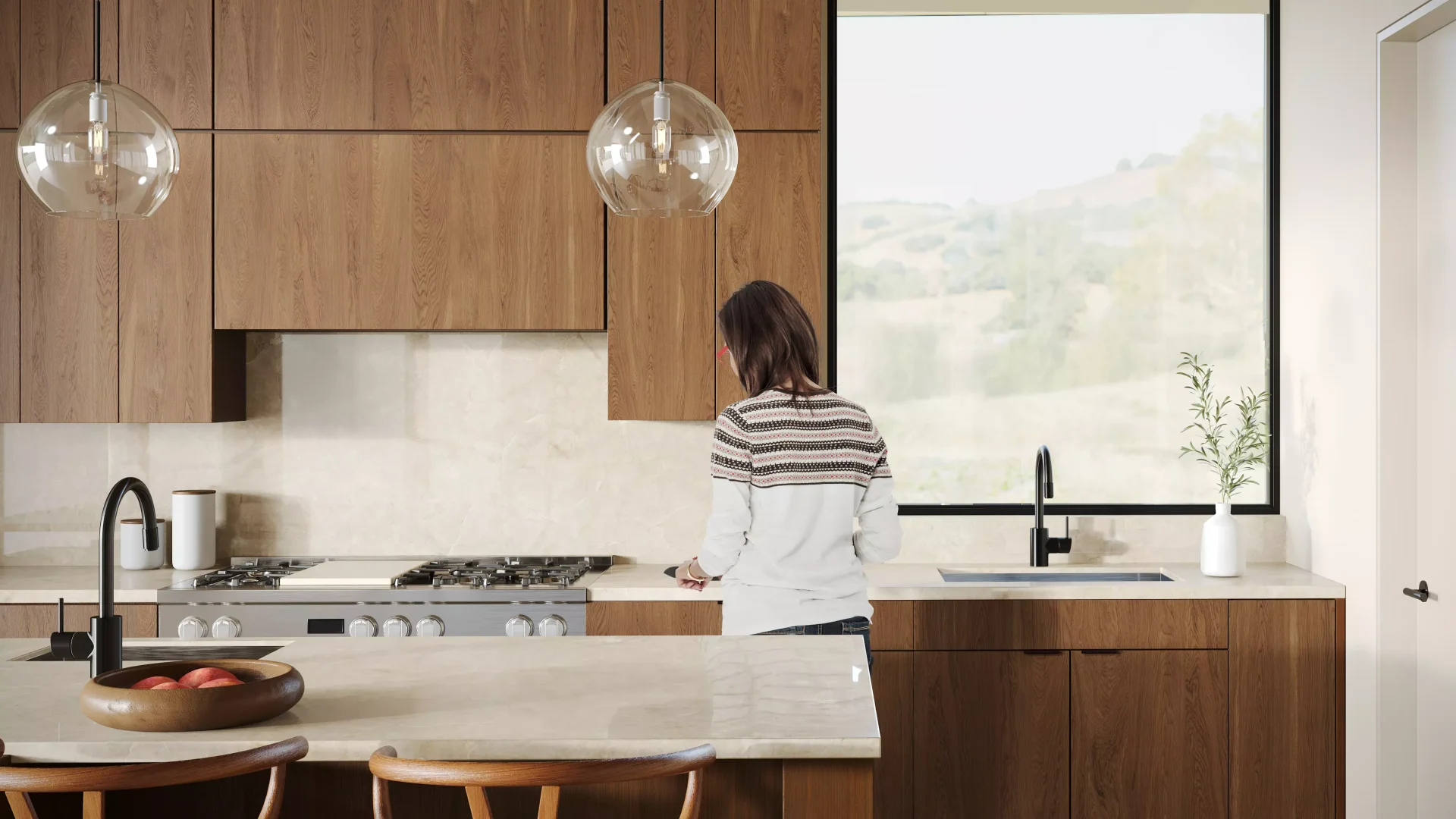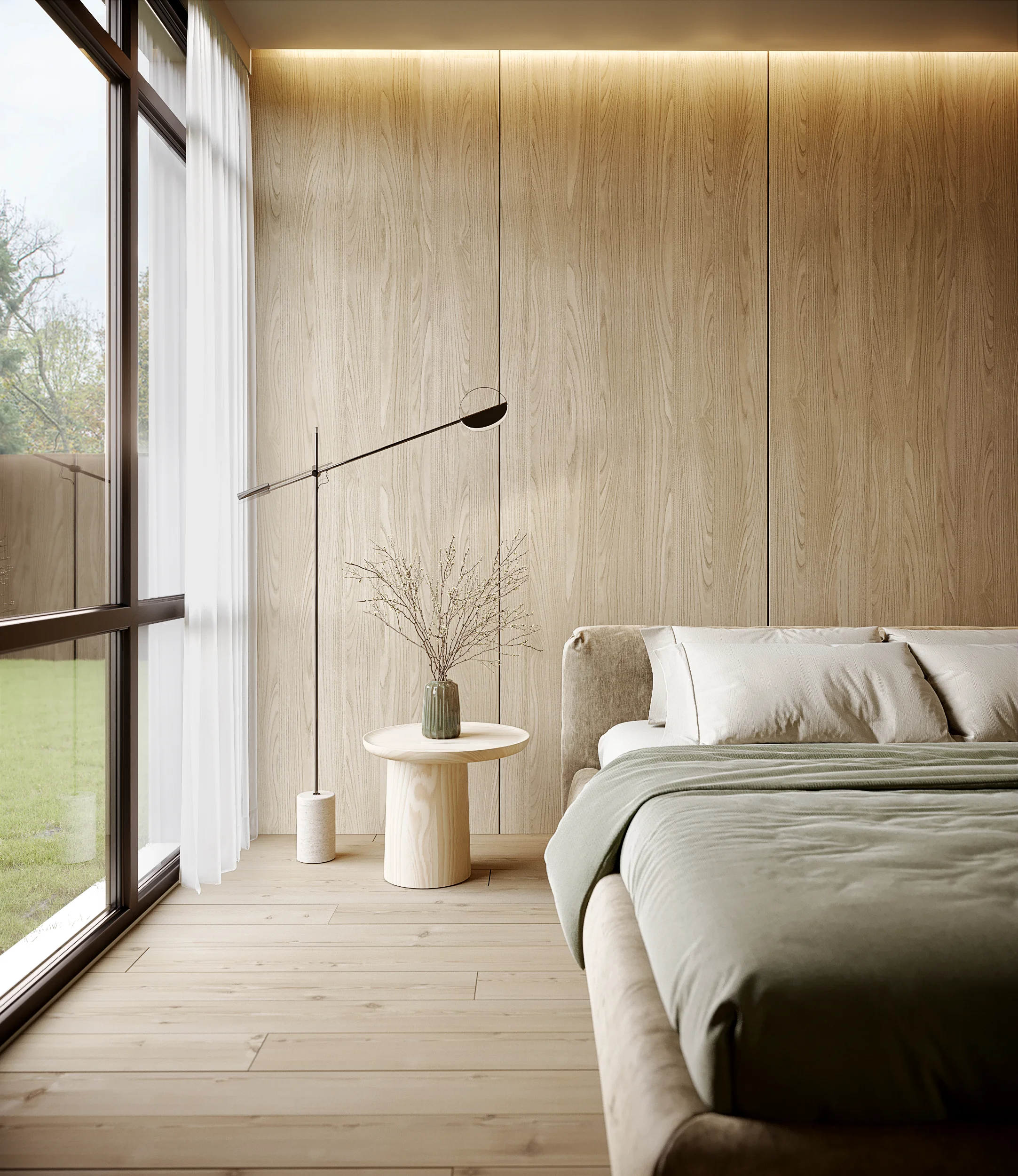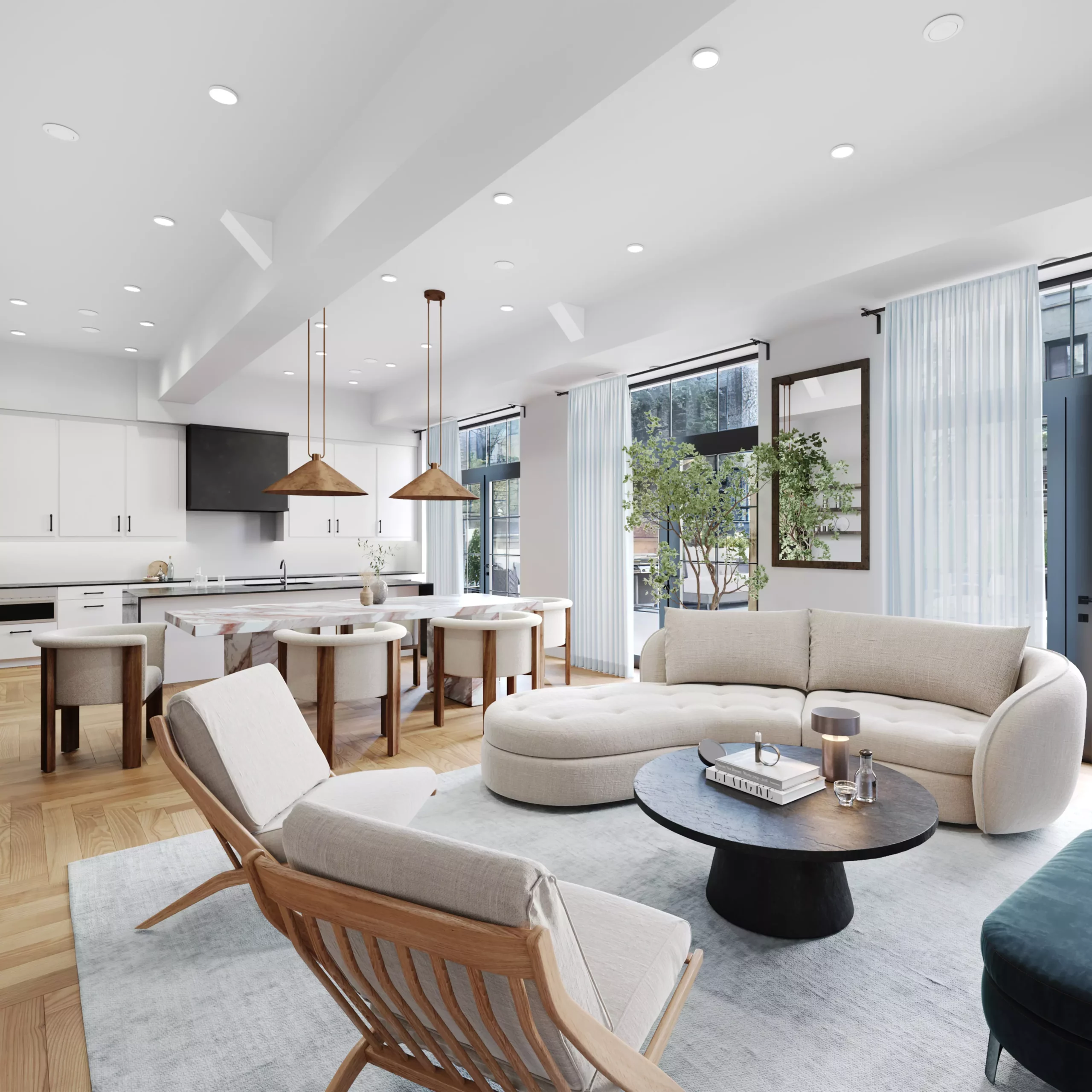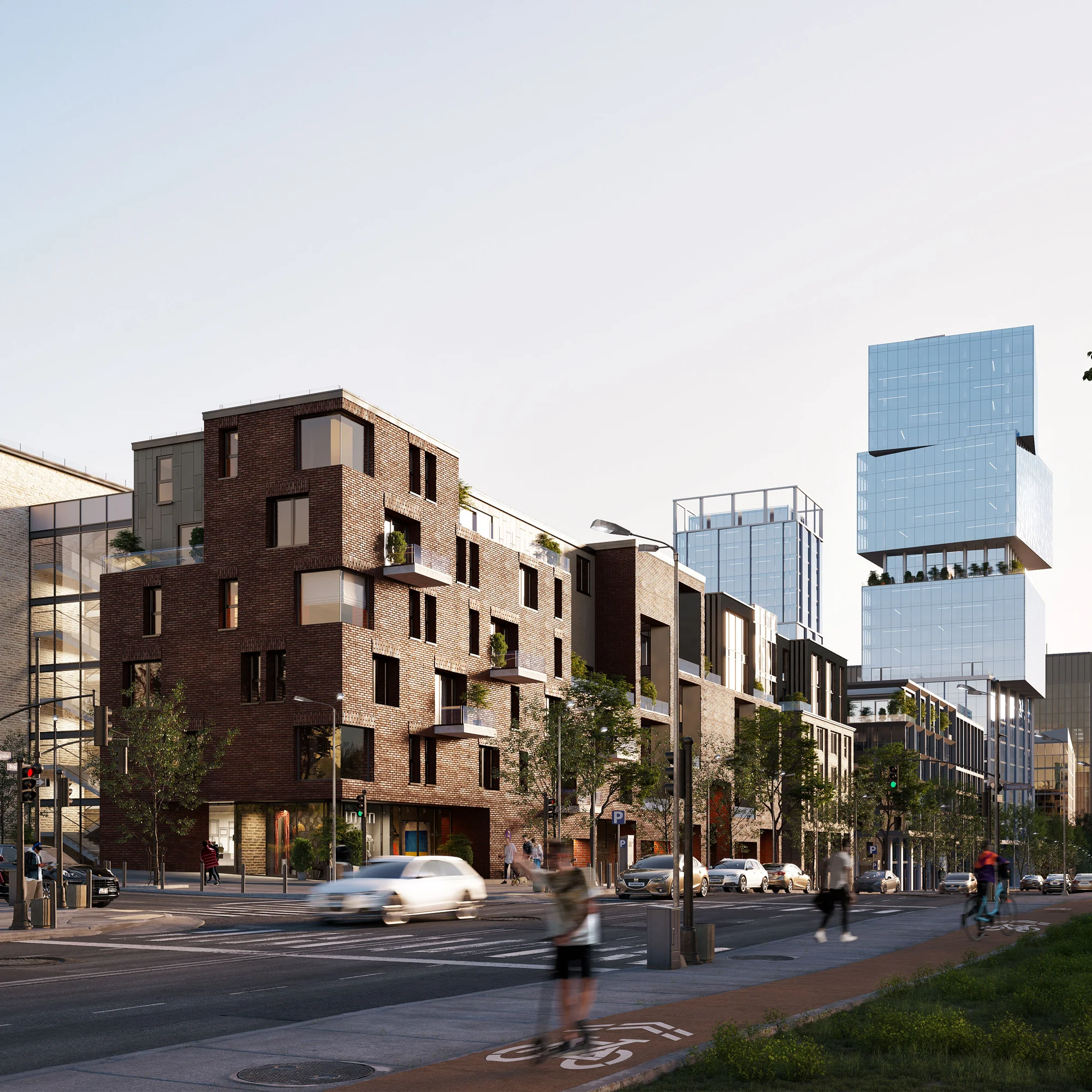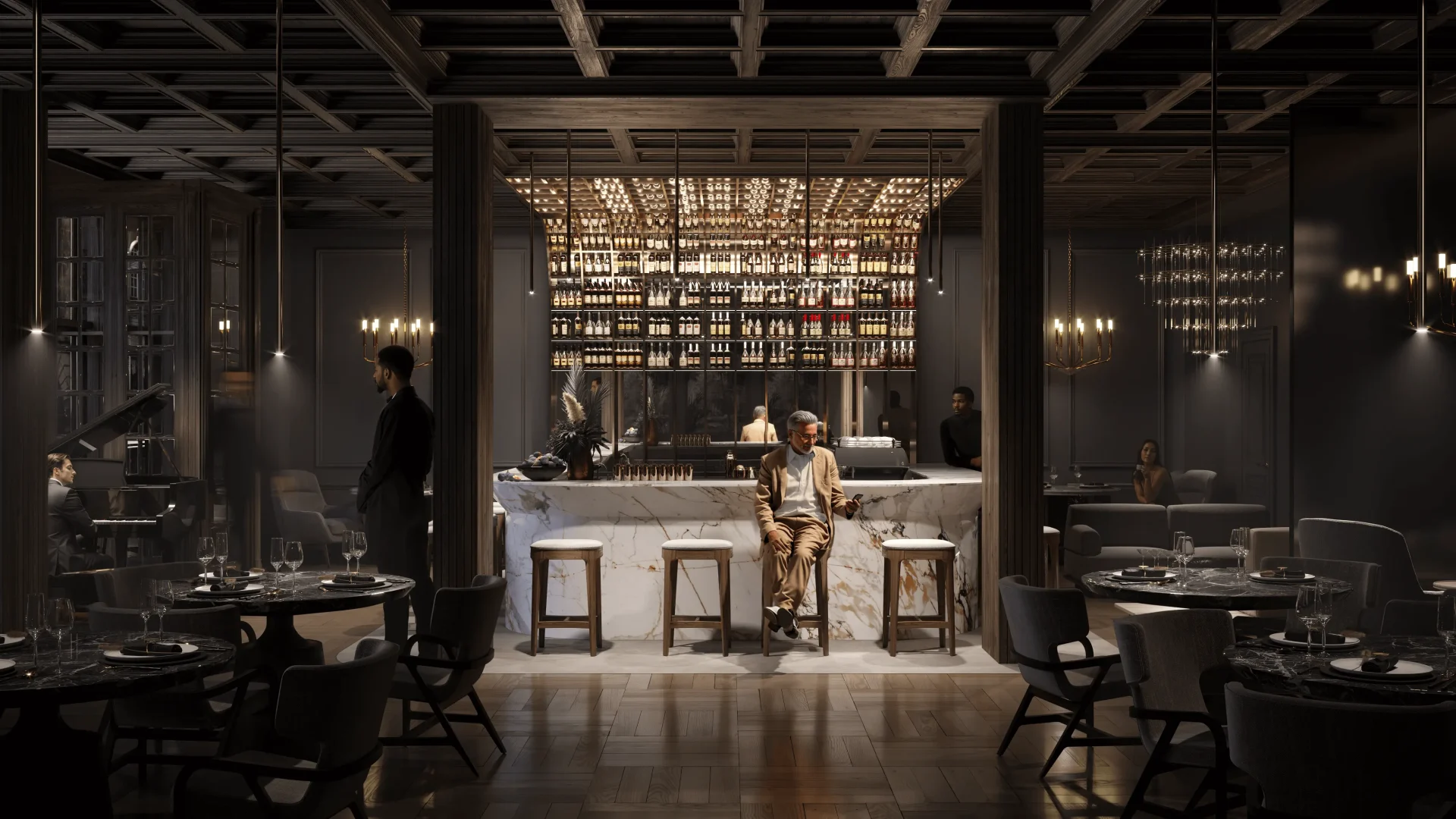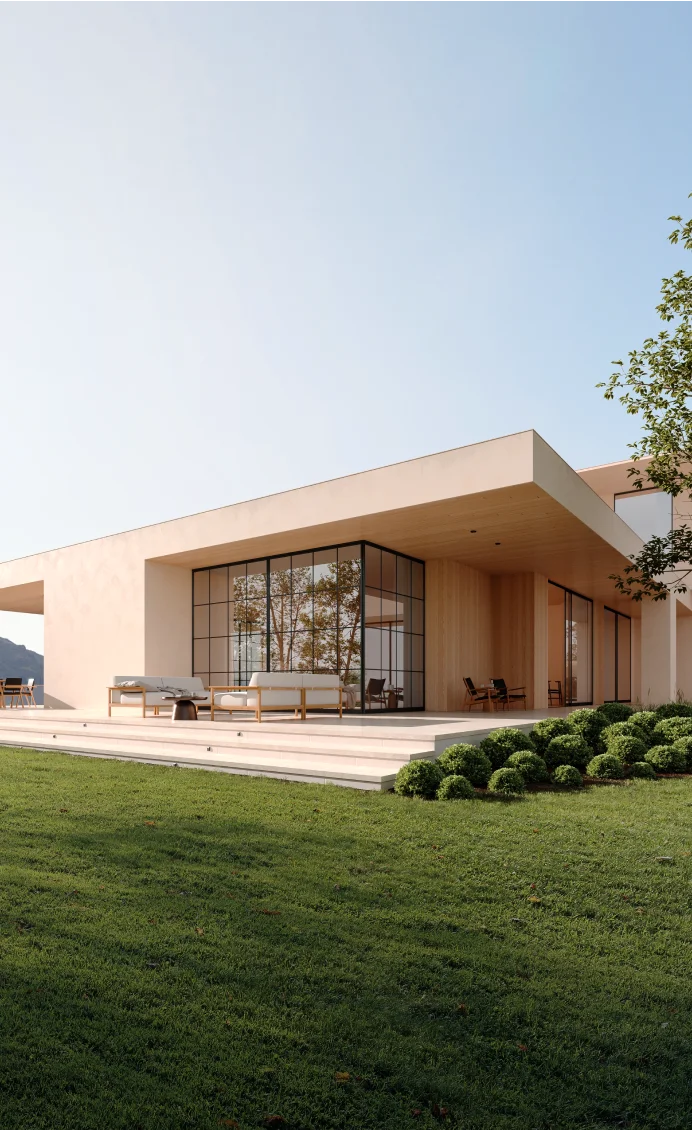Key Takeaways:
- Growing Importance of Photorealistic 3D Rendering: Photorealistic 3D rendering is increasingly important across industries, enhancing visual communication and providing a realistic representation of concepts and designs.
- Mastering Techniques for Photorealism: Techniques such as IES light profiles for photometric lighting, beveling, chamfering, texture-mapping, and HDRI lighting are pivotal in achieving photorealistic effects in 3D renders.
- Creating Photorealistic 3D Interior Renders: Achieving photorealistic 3D interior renders requires a mix of accurate scale adjustment, effective lighting techniques, the use of PBR materials, and careful scene setup and texture consistency.
- The Value of 3D Photorealism: 3D photorealistic renderings enhance visual communication, providing a credible and compelling presentation of ideas and designs that bridge the gap between imagination and reality.
- Role of Professional Software in 3D Rendering: Professional software equips 3D professionals with tools for depth of field control, lighting management, and texture creation, thereby facilitating the creation of high-quality, photorealistic 3D renders.
In an era rapidly dominated by digital technology, the growth and importance of 3D rendering, especially photorealistic 3D rendering, has become increasingly apparent. It has transformed a plethora of industries, including architecture, gaming, advertising, and more, by enhancing visual communication and providing a realistic preview of concepts and designs. Photorealistic rendering, in particular, bridges the gap between reality and digital constructs, offering a lifelike experience that can significantly impact decision-making processes.
However, with this exponential growth comes the necessity for optimization. As the demand for photorealistic rendering amplifies, so does the need for solutions that cater to specific requirements. By acknowledging this, we can leverage the full potential of 3D photorealistic rendering, tailoring it to suit individual needs, ensuring efficiency, and ultimately driving the evolution of this indispensable technology. The future of 3D visualization is not just about understanding photorealistic rendering; it’s about optimizing and molding it to our specific needs for maximum utility and impact.
Understanding the Basics of 3D Rendering
3D visualization is an amazing tool that enables us to create compelling, lifelike images that can simulate real life scenarios. In essence, it is the process of converting three-dimensional models into 2D images or animations using computer graphics. This technique plays an instrumental role across various industries, including real estate marketing, gaming, and interior design.
A crucial stage in the process of 3D visualization is rendering. This is where the ‘magic’ happens; a basic model turns into a sophisticated, detailed image that resembles real life. The significance of photorealistic renders is evident. They enable designers to reproduce natural lighting, textures, and colors with remarkable precision. With the appropriate lighting setup, including basic illumination setup, photorealistic renderings can be so lifelike that they are almost indistinguishable from photographs.
In fact, the field of 3D rendering has undergone significant advancements. CGI technology, for instance, has become a key player in shaping photorealistic renders, delivering a new level of realism. It is widely used by interior designers to visualize spaces and materials with remarkable accuracy. The advantage is evident – clients can see exactly how a space will look, down to the smallest detail, before any physical changes are made.
Presentations, exhibitions, and various industry applications are all enriched by 3D rendering. Real estate marketing, for example, leverages this technology to create immersive property tours that engage potential buyers more effectively than traditional methods. By infusing 3D rendering with photorealism, we bring digital creations to life, offering the viewers an experience that mirrors reality.
Breaking Down Realistic 3D Rendering
Photorealistic 3D rendering, as the name suggests, is a technique that produces images so realistic they can be mistaken for a photograph. This level of realism is achieved by using specific software, techniques, and a powerful rendering engine. The process is similar to real-life photography, where the same object can be viewed from multiple angles and lit with different light profiles to create the most lifelike image possible.
Key to achieving photorealism is the use of high poly props, photometric lighting, IES light profiles, and meticulous texture mapping. With the right software, these components are integrated in the rendering engine to create high-quality images that represent the final image in detail. In post-production, further enhancements can be made to the exterior design rendering, creating a visual that is almost indistinguishable from a real-life photo.
Photorealistic 3D rendering has immense importance in the modern world, particularly in many fields. For instance, real estate agents can provide prospective buyers with lifelike images of properties, viewed from different angles, even before construction begins. This level of detail not only aids in marketing but also in the decision-making process.
In the realm of interior and product design, photorealistic 3D rendering allows designers to explore and showcase their work in unprecedented detail. By observing their designs from multiple angles and under varying light profiles, they can perfect their creations before producing the final product.
Overall, photorealistic 3D rendering is revolutionizing how we visualize concepts, turning virtual into reality and driving innovation across various sectors.
Mastering Techniques to Improve Photorealism in 3D Renders
Mastering photorealistic 3D renders is a critical part of the design process. Techniques like IES light profiles for photometric lighting, beveling, chamfering, texture-mapping, and the use of HDRI lighting for global illumination, all play pivotal roles in achieving the photorealistic effect.
IES light profiles, in particular, can reproduce realistic, detailed lighting effects, contributing significantly to the final result. Similarly, beveling and chamfering help to create more natural, realistic edges, adding depth and authenticity to the high poly props and other elements in the 3D scene.
Texture-mapping, depth of field, chromatic aberration, and asymmetry each add their own dimensions of realism. Texture-mapping brings surfaces to life, while chromatic aberration can add a subtle, yet dramatic effect that further enhances photorealism. Incorporating natural effects and asymmetry can make the scene more authentic and relatable, fostering an emotional connection with potential clients, a key component of any successful marketing strategy.
Specular maps are another essential tool in the 3D artist’s arsenal, used to highlight and diffuse certain parts of the 3D model, emulating the way light interacts with different surfaces in real life. For instance, they can make the glossy pages of furniture catalogs look incredibly lifelike in a 3D render.
Finally, perfecting the final touches and avoiding common mistakes is critical for the perfect shot. This can involve adjusting the V-Ray settings, fine-tuning the lighting, or adding minor imperfections to enhance realism.
Mastering these techniques can elevate architectural competitions, and product presentations, offering a level of detail that allows viewers to fully envision the final product, thereby enhancing their overall engagement and investment.
Crafting Photorealistic 3D Interior Renders
Crafting photorealistic 3D interior renders is a nuanced process that requires an understanding of various techniques, the right software, and a keen eye for detail. The journey to achieving a photorealistic 3D interior render starts with the creation of a 3D model. This is where the work begins.
The first thing that needs to be considered is scale adjustment. A proper sense of proportion is essential to create a believable interior. Accurate 3D modeling, including furniture and decor, contributes to creating a real-time, immersive experience for viewers.
Lighting is another crucial aspect of 3D rendering. The application of depth of field, the management of shadows, and the careful use of global illumination can dramatically affect the level of photorealism. Different options for lighting techniques, such as the use of IES light profiles or HDRIs, can provide a greater degree of realism.
Quality of materials also plays a key role. PBR materials, which stand for Physically Based Rendering materials, allow for the creation of surfaces that closely mimic real-world counterparts, enhancing the overall photorealism.
Scene setup and texture consistency are vital as well. From the placement of objects to the coordination of textures, every detail matters. Attention to such details, combined with the use of popular programs such as 3ds Max, Blender, or V-Ray, can significantly improve the final result.
The final touches come in post-production. This stage includes color correction, adjusting brightness and contrast, and adding elements that enhance the photorealistic effect, like depth of field.
3D renderings have transformed many industries, including product design and real estate. They allow for detailed presentations before the tangible work even begins, making photorealism important not only for aesthetic reasons but also as a practical tool for visualization.
To sum up, achieving photorealistic 3D interior renders requires a large team effort, the mastery of many different techniques, and the right software, but the end result is well worth it.
Conclusion
The importance of 3D rendering systems in various industries, especially real estate and product design, is indisputable. Detailed 3D renderings offer an enhanced visual communication tool, streamlining interactions with stakeholders, clients, and team members. They enable complex ideas and designs to be presented accurately and compellingly, bridging the gap between imagination and reality.
The value of 3D photorealism cannot be overstated. As the final result of intricate 3D modeling and precise rendering techniques, photorealistic 3D renders offer viewers a look that mirrors reality, enabling them to visualize tri-dimensional models in a way that feels tangible and authentic. This realism not only makes projects look more aesthetically pleasing but also more credible and trustworthy.
The use of professional software is crucial in achieving high-quality results. It equips 3D professionals with the tools needed to control depth of field, manage lighting, and create textures that make the render look like it was taken straight out of the real world.
3D photorealistic rendering is a vital asset in the modern world of design and visualization. It allows for more accurate, compelling, and efficient presentations of ideas, enhancing the 3D visualizer’s skills and output. The many different benefits it brings to the table make it a worthwhile investment for any business seeking to enhance their visual communication.
FAQ:
What role does CGI technology play in 3D rendering?
CGI technology is instrumental in shaping photorealistic renders, providing a new level of realism, especially in the field of interior design. It allows visualization of spaces and materials with remarkable accuracy.
How has photorealistic 3D rendering influenced the real estate industry?
Photorealistic 3D rendering has had a significant impact on real estate marketing by creating immersive property tours that engage potential buyers more effectively than traditional methods. Real estate agents can provide prospective buyers with lifelike images of properties, even before construction begins.
What role does a 3D visualization studio play in photorealistic rendering in architecture, interior and exterior design?
A 3D visualization studio utilizes the expertise of professionals and cutting-edge software to craft highly realistic 3D renders. These renders can effectively showcase architectural concepts, interior designs, and exterior layouts, offering an impactful tool for visual communication in these fields.
What are PBR materials in the context of 3D rendering?
PBR materials, standing for Physically Based Rendering materials, allow for the creation of surfaces that closely mimic their real-world counterparts. They play a critical role in enhancing the overall photorealism of a 3D render.
Why is post-production significant in 3D rendering?
Post-production plays an essential role in crafting photorealistic 3D renders. This stage includes color correction, adjusting brightness and contrast, and adding elements that enhance the photorealistic effect, such as depth of field.

